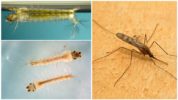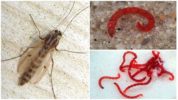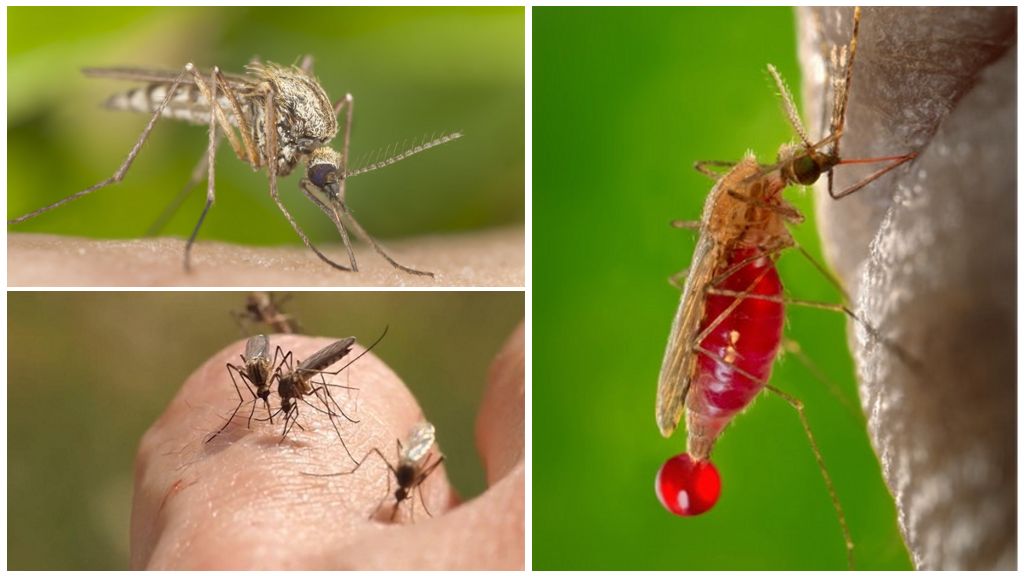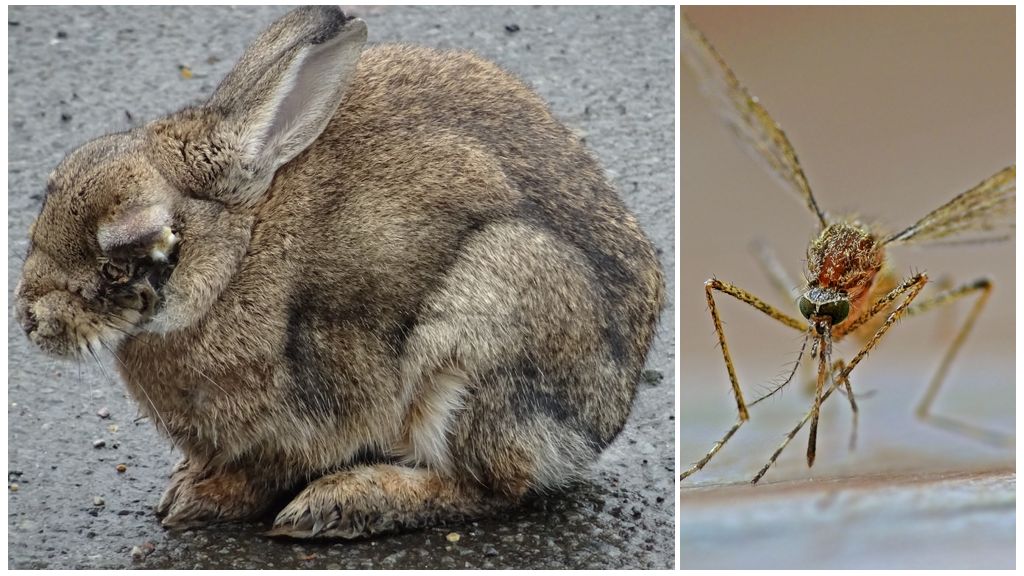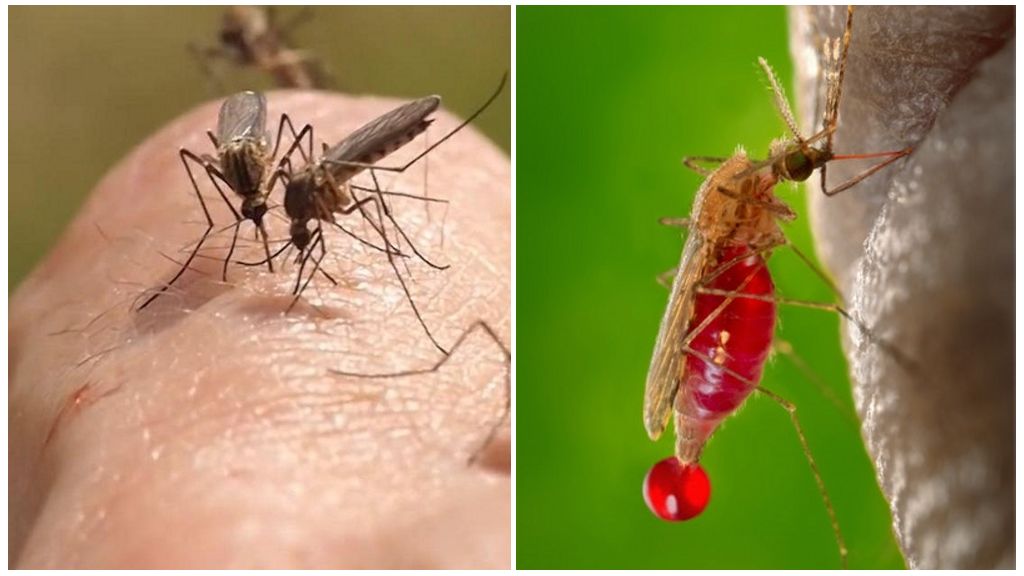- Mosquito breeding cycle
- Larvae of a malaria mosquito
- Common mosquito larvae (bloodworms)
Mosquito life cycle consists of 4 stages: an egg, a larva, a chrysalis and an adult or adult. It takes several days for a mosquito larva to emerge from an egg. In the larval stage, the insect spends more time and already leads a fairly active lifestyle. It is able to independently move and eat.
How is development
Over the entire period of growing up, only 4 molting occurs. During this time, individuals increase in size several times. In the photo, mosquito larvae resemble small caterpillars or worms. Depending on the type, their colors and structure. The abdomen consists of 10 segments.
You can find out what a mosquito larva looks like without resorting to literary sources. They can be found in the summer in almost any country cask or other water tank, which is rarely changed. They will appear as small worms hanging on the surface. If they approach or try to catch them, the larvae will actively begin to plunge into the depths, in search of shelter. Their oxygen smell lasts for 15 minutes, after which they will have to return to the surface again.
On a note!
After going through all stages of molting and reaching a certain size, the mosquito larva turns into a chrysalis. It is clearly different in appearance and looks more like a small tadpole. Pupae are more mobile and can move in rapid jumps.
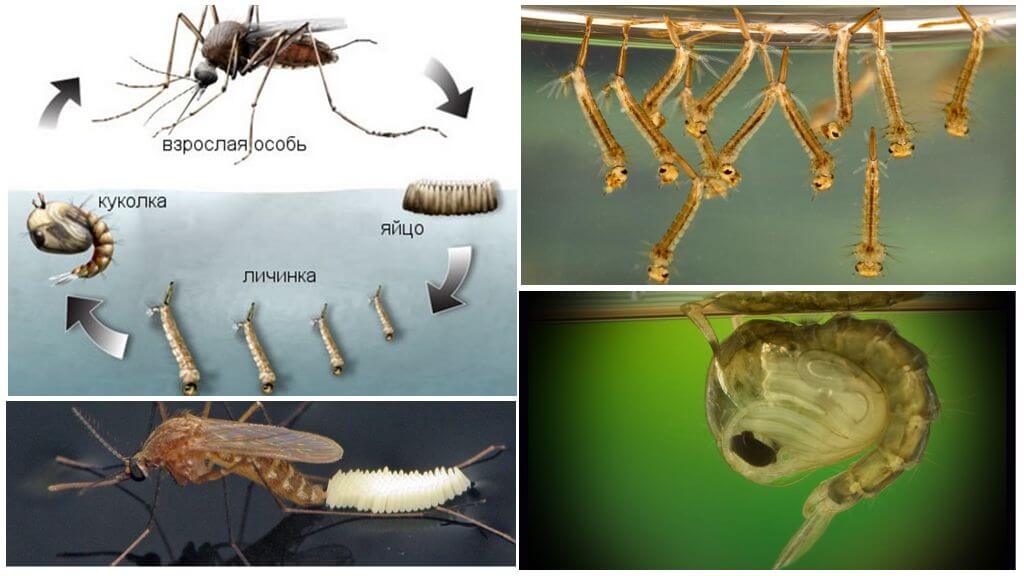
Where do they live
Various types of mosquitoes choose different places for laying eggs. The determining factors for them are:
- Light level.
- The presence of nutrients.
- Water temperature.
For laying eggs, the female chooses small ponds with stagnant water, where there are a large number of microorganisms and the ability to mask from predators.
The temperature regime is 10-35 degrees Celsius, but it is optimal when this indicator is at around 25-30 degrees. Mosquito females rarely choose large bodies of water for offspring. In them, the larvae will be difficult to confront all natural enemies.
Despite the low demands on the environment, larvae cannot live in too polluted waters. So, if in water there is a high content of oil products, then almost all individuals die. The oil film formed on the surface does not allow full breathing. This does not apply to species that use oxygen dissolved in water for breathing.
Habitat also determines the characteristics of breathing. In some species, this occurs with oxygen from the air. For this, there is a breathing tube at the end of the body. Individuals attach to the surface of the water and spend most of the time in this state. They change their position only in case of danger.
Those types of mosquitoes that use oxygen dissolved in water absorb it all over the surface of their body. Species that live at the bottom of water bodies have special gill filaments, which make it possible to obtain the necessary amount of oxygen.
What eat
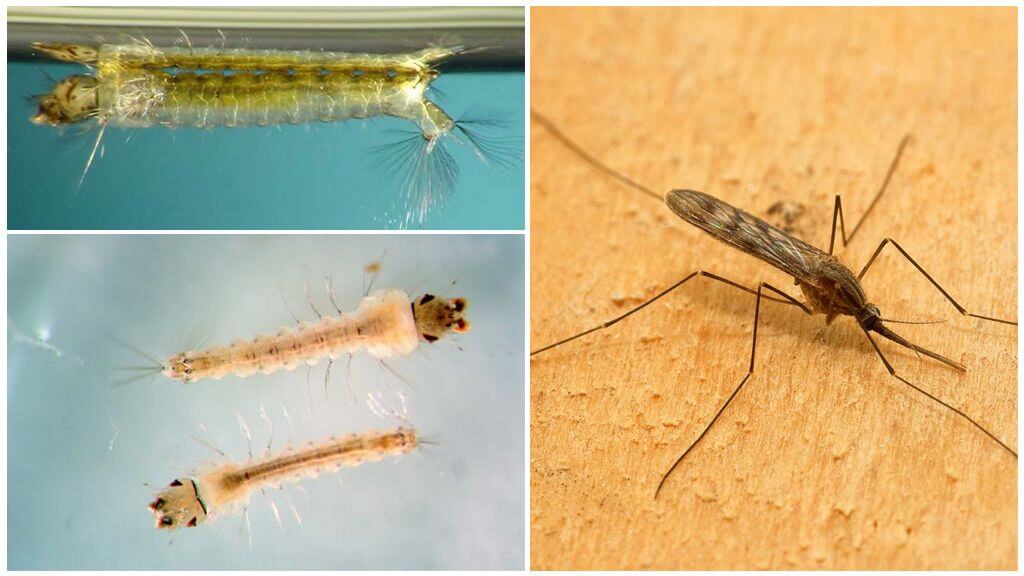
The nutrition of mosquito larvae is very diverse. They consume everything that can be processed by a tiny organism. Most often, the larvae feed on various microorganisms that are in the water.Given the fact that they choose stagnant water bodies for existence, there is no shortage of food.
Interesting!
On average, every day, each mosquito larva filters about 1 liter of water.
Small particles of decaying plants, which are sufficient in water, are also used. Among them are predators. This is the larva of the malaria mosquito of the Anopheles barberi species. They eat the larvae of other mosquitoes.
Almost continuously, the larva passes water through its oral apparatus. There she has a special filtration system that allows you to capture nutrients.
Who are bloodworms
A separate group is represented by representatives of the Chironomus family. They are better known as bloodworms. Other names: mosquito bells, chironomide. Bloodworms are the larva of the most common common mosquito. They prefer to settle at the bottom of the pond.

For 2 weeks in the larval stage, individuals grow to 15-16 mm. Mosquito larvae living on the bottom of the lake feed on silt sediments and microorganisms. Breathing occurs due to the presence of gill filaments. They can also absorb it throughout the surface of the body.
On a note!
The bloodworm has a bright red color. This is due to a large amount of hemoglobin. The high iron content in the body allows it to survive even in conditions of acute oxygen deficiency. Often a mosquito larva is called a bloodworm of not only the specified type. This statement is incorrect.
Larva of malaria mosquito
The characteristic difference of the offspring malaria mosquito is the absence of a respiratory siphon. The result was that the individual for gas exchange is attached to the water surface using special bristles located in front of the abdomen. The position of the body relative to the surface of the water is parallel. Body sizes depend on the temperature of the water. The colder it is, the smaller the worm.
Role in the biocenosis
Mosquito larvae play an important role in the development of the entire biocenosis of stagnant water bodies. They are valuable links in many food chains of insects, amphibians, small fish and birds. Such goods are sold in specialized stores, so they are actively used as feed for aquarium fish.
Larvae feed on various species of fish, gulls, geese, hedgehogs, crustaceans, frogs and toads. There is even a separate species of fish - gambusia, which feed mainly on mosquito larvae. Fish can switch to another source of nutrition only in case of deficiency of the main treat. This feature is often used to control populations. Gambusia even helped to overcome the epidemic of malaria in Russia and some other countries.
On the individuals themselves, fungi and bacteria parasitize.
Thus, during its short period of life, mosquito larvae, like mosquitoes are necessary in nature. Without them, many species of the animal world would be left without food. But if they are used for domestic purposes for fishing or as food for fish, you should be very careful with them. With improper maintenance, you can quickly get adults who are dangerous for their bites.

